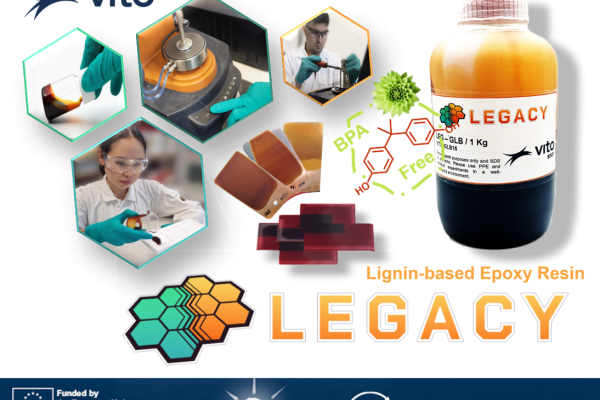
BioRECO2VER: from CO2 to valuable chemicals
BioRECO2VER was backed by the EU Horizon 2020 program. In four years, the project aimed to demonstrate the technical feasibility of more efficient biotechnological processes to capture CO2 from industrial point sources and turn that into valuable platform chemicals such as isobutene and lactate.
The pros and cons of biotechnology
CO2 is the main component of a lot of materials used in industrial processes and our daily lives. At the moment, it’s usually derived from fossil sources, but what if we could capture it straight from CO2 emissions? Biotechnology especially offers several opportunities for the conversion of harmful CO2 emissions into valuable basic chemicals.
However, these biotechnological processes have their own set of economic and technical obstacles. The costs of the pretreatment of the gas are high, the product recovery costs are steep, and the scalability has not yet been demonstrated fully. BioRECO₂VER attempted to find out how to overcome those challenges.
Repurposing CO₂ through more efficient bioconversion
The project had several goals, such as:
- Developing and applying robust enzymes to capture CO₂ from industrial point sources by combining enzymatic absorption with ionic liquid-amine blends.
- Developing three microbial platforms to convert CO₂ to platform chemicals with the help of a carbon-free energy supply.
- Designing the new fermenters to ferment more efficiently and optimise the process circumstances.
- Validating the most promising isobutene and lactate production route at TRL 5 with real off-gases.
- Assessing the sustainability and demonstrating the socio-economic and industrial feasibility.
To reach our goals, the team examined, among other things, a hybrid chemo-enzymatic process for the capturing of CO2 from industrial point sources. This capturing process was upscaled in a trial and the set-up was used later on for real off-gas pretreatment during the project.
Additionally, we examined two alternative approaches for the biotechnical conversion of (captured) CO₂ and the co-substrate hydrogen. That conversion comes with technical and economic challenges because it happens in the liquid phase when the substrates are poorly soluble gases. That’s why we looked into high-pressure fermentation and bio-electrochemistry with in-situ hydrogen production.
VITO’s part in BioRECO₂VER
- VITO was the project coordinator of BioRECO2VER.
- Additionally, we designed a flexible and multifunctional high-pressure fermenter. That fermenter was custom-made and included advanced online sensors, monitoring and control. The fermenter also included a membrane filter unit to reach high concentrations of microbial biocatalysts.
Funding
BioRECO2VER is backed by the European Union’s research and innovation program Horizon 2020 as part of the grant agreement nr. 760431.













